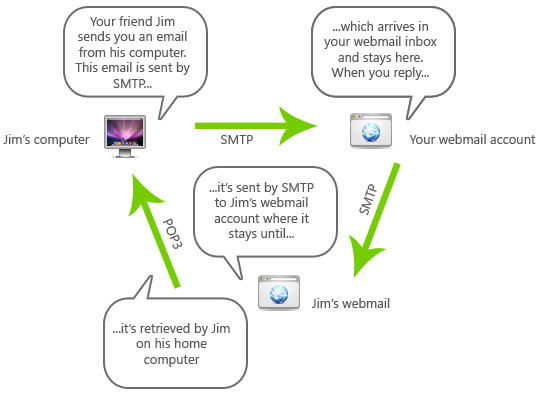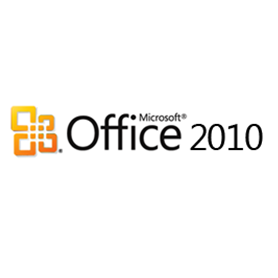A note from the editor
The newsletter this month arrives from a long way away – a very long way away – the 1950s. Mrs C and I are currently sunning ourselves on the ancient isle of Vectis in preparation for what is shaping up to be a very busy few months!
Luckily here on the Isle of Wight, the Gin flows freely and the weather is glorious, allowing us to momentarily take our minds off the impending rush.
In the news at the moment; as YouTube recently reaches its 5th birthday, I take a moment to reflect on its success – it’s grown from a simple video sharing .com start-up business into one of the cornerstones of internet culture in just 5 years!
There are many reasons why YouTube continues to be so successful – obviously, there was a niche in the market for a good method for easily posting videos online and YouTube have also never lost sight of which side their bread is buttered. However, the number one reason for their success – and the lesson we can all learn from them – is that good content is king. That is to say, if you’re content is good, your website will attract visitors. If it’s bad, you won’t.
In this issue
- Grown-up Instant Messenger
- Building your personal brand
- Virtual marketing department
Grown-up Instant Messenger
I love Skype. I’ve been using it in a business context since it was launched in 2003 and have become very reliant on it. In fact, if we had to stop using it, it would be painful!!!
On the face of it, Skype offer a similar service to MSN Messenger, however, there are some very useful features besides ‘instant chat’ that can be used for both business and pleasure and even save you money!
Skype charges a nominal fee for calling landlines and mobiles in the UK, however, if you need to phone abroad, it can also often be a very cheap alternative. If memory serves correctly, the connection between your computer and telephone exchange local to where you’re calling is free as it uses the internet. The only part you have to pay for is the connection between that local exchange and the phone you’re calling which is normally a lot cheaper than calling from your home phone where you pay for the whole thing. You can also SMS worldwide from your desktop, which can come in very handy sometimes!
Other free features include worldwide video conferencing or video chat – useful for keeping in touch with relatives abroad, and file sending – great for small documents like Word or Excel.
If you’re travelling abroad, why not save money by taking advantage of free internet access and use Skype to keep in touch and make and receive calls for a fraction of the price your mobile provider would charge? You can also get Skype on many of the newer mobiles and hand-held devices.
Skype is available to download for free from Skype.com and if you’d like to add me as a contact, start the application, click on ‘new’ then ‘new contact’ and do a search for ‘chris-day’
Building your personal brand
If you’ve ever ‘googled’ yourself it’s pretty likely that, like me, you’re no where to be found. Surely this doesn’t accurately reflect your lifetimes’ achievements so far? Why should a 14 year old with the same name as you, venting their unusual views on modern music, appear high in the rankings but you’re in the metaphorical desert of the search engine world? And anyway, does this even matter?
Spending years running your business, living and breathing your vocation will inevitably start to turn you into an expert in your field. Your personal business worth (in an hourly-rate sense) is based on other people’s perception of your knowledge, ability and experience. If you love what you do and you’re an expert in your field, surely your ‘hourly rate’ should reflect this and increase proportionally?
Differentiating yourself from the amateurs or those with less ability and experience is the thing that will allow you to command a higher hourly rate; however, this is sometimes very difficult to do!
Culturally, self-promotion is often something that is often looked down on. Derogative words and phrases like ‘big head’ or ‘bragger’ are used to deride those that talk proudly about their achievements. Victoria Wood summed it up well when she said ‘we don’t flaunt, we tut’; however, shouting about your achievements and what a great job you’ve done is perfectly acceptable when done by someone other than yourself such as a grateful client!
Letting people know how good you are at what you do is not bragging – rather it’s an important and vital exercise if you are going to move forward (and upwards) in your field. It will not only help you command a higher rate but also open new doors and opportunities for you. As such, it’s worth spending time investing in your personal brand by making a name for yourself. For example, speaking at colleges, universities or events may not be everyone’s idea of a good time, but, it will often lead on to work. Writing articles for websites and collecting testimonials for your website will also help promote you and your services. Why not write a press release when you’ve got an exciting bit of news? There’s a good chance you can get it into at least the local paper!
You’re only as good as people perceive you to be – you need to make sure their perception is correct.
Virtual marketing department
This week here at Seven Creative’s country retreat, we’re taking a well earned break from the rigours of work. Earlier in the newsletter we mentioned that we’re looking towards a very busy few months which, as I’m sure you’ll already know, is one of the nicer problems you can have in business!
After the events of the final few months of 2009, we resolved to put our money where our mouths are and prove we know what we’re taking about. Now in 2010 we’ve already beaten all previous years’ records – which is quite an achievement (even if I do say so myself!) – And we’ll be almost certainly continuing our record breaking year.
This is something we can do for you too.
Business is a fine balance between ‘working on’ and ‘working for’ your business. However, the majority of small to medium businesses spend the majority of their time working ‘for’ their businesses. One is a short-term activity and the other is a long-term investment.
The recession, for example, took many businesses by surprise and those without a strong enough business model have suffered!
If you’re interested in talking to us about how we can boost your business by providing a virtual marketing department, give us a call or drop us an email
In the next issue
- Business promotion – blogging
- Creative advertising revenues
- Simple SEO
And finally…
As we reach the end of Easter and we resolve to make sure we’ve got Sky boxes in more than one room next year so that Day Jnr can watch Spongebob and Disney films far away from our ever hurting ears, I’m reminded of a quote I once heard on the subject of sharing:
“Hedgehogs. Why can’t they just share the hedge?” – Dan Antopolski
From all of us here at Seven Creative’s island getaway; we wish you a continuing happy and prosperous year.











 A note from the editor
A note from the editor

